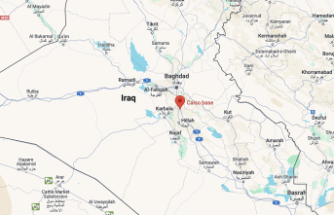COVID-19 is an infectious disease that can be presented as a hyperactive and uncontrolled immune response, causing serious immune injury.
The study of the potential causes that lead, in some patients, to an exaggerated and unloadable reaction is being basic in these last two years of pandemic by SARS-COV-2 to achieve an adequate control.
Currently, it is estimated that between 80% and 90% of people infected by Covid-19 only present mild paintings, and even more as it is observed with the omicron variant, while between 10% and 20% are They face more severe or potentially fatal symptoms.
This data has been the starting point of a new work of the team of the Immunobiology Department of the University of Yale, and the Howard Hughes Institute, Yale, both in the United States, coordinated by Richard Flavell, in which they have observed that the Justification could be in the inflammatory antiviral response of each patient's organism, in front of a heterogeneous disease with few therapeutic options.
According to Flavell, current experimental models do not reappeate the sustained immunopathology of patients with serious illness, so the first objective was to develop a humanized mouse model of COVID-19.
Laboratory mice that had immune systems similar to those of human beings were designed. These models revealed that the causes of severe COVID-19 may reside in the inflammatory antiviral response of each individual against the virus, according to the data published Nature Biotechnology.
In addition, with its study it could also be deepened in the reasons why the persistent VOC and maintains and, therefore, try to develop more specific therapeutic measures for this syndrome.
Flavell describes that the Humanized Mouse model of COVID-19 uses adenoasociated virus to administer the human ace2 receptor to the humanized mice lungs. "This model recapits innate and adaptive human immune responses to SARS-COV-2 infection of severe acute respiratory syndrome up to 28 days after infection, and with key characteristics Chronic disease: weight loss, persistent viral RNA, pathology Pulmonary with fibrosis, human inflammatory response macrophage, persistent genetic signature stimulated by interferon and T cell lymphopenia ".
According to work, the different responses of the immune system to the virus observed in standard laboratory animals and human beings "have hampered the scientific community the determination of the point of inflection between the mild and serious cases of COVID-19".
However, the current animal model developed by the Yale Group, designed to have an immune system similar to that of humans, offers the opportunity to answer the question of whether the presence of human immune cells in humanized mice with ACE provoked a disease Persistent and if they also showed a more serious pulmonary pathology compared to other animal models.
This pulmonary pathology followed, according to the analyzes, the three stages that have been described in human patients with Covid-19: Exodative, organizational and fibrotic, suggesting that humanized mice model chronic disease and recapitulate the severe and persistent pulmonary pathology observed In patients with severe COVID-19.
"If a standard laboratory mouse is infected with SARS-COV-2, it will be infected, but it will not be seriously ill. But our humanized mice get sick and not improve," says Flavell.
The infection procedure of the laboratory models was based on the introduction of SARS-COV-2 through samples of seriously diseased people that were introduced into the nostrils of humanized mice, controlling the course of the infection, explains ESEN SEFIK , first author of the study and fellow of the Howard Hughes Medical Institute, at the Cancer Research Foundation Damon Runyon, in Yale.
The experimental model has also served to study two therapies known in immunopathology: monoclonal antibodies derived from the patient and steroids, such as dexamethasone, verifying that the same inflammatory macrophages, crucial to contain early infection, subsequently promoted the immunopathology, a phenomenon that confirms that Both therapies can help treat COVID-19 infections.
"However, in the case of monoclonal antibodies, treatment is only effective if administered in the first phases of the disease. In the case of steroids, they are only effective if they are administered during the last phases of the disease", He explains Flavell.
Thus, and according to Michel Nussenzweig, immunologist at Rockefeller University and the Yale Department of Immunobiology, "these monoclonal antibodies, which are specifically directed to the virus, were effective if they were administered before or very soon, but insufficiently Effective for symptoms if they were administered in the subsequent phases. "
On the contrary, in the early stages of viral infection, dexamethasone suppressed the initial immune response, key to combat the virus, so it was not effective.
However, it did show effectiveness against viral elimination if it is administered in later stages of the disease, since "it suppresses the inflammatory response that the organs had begun damaged. At the beginning of the disease, a strong immune response is crucial for the Survival, "says Sefik.
Date Of Update: 06 January 2022, 21:12











